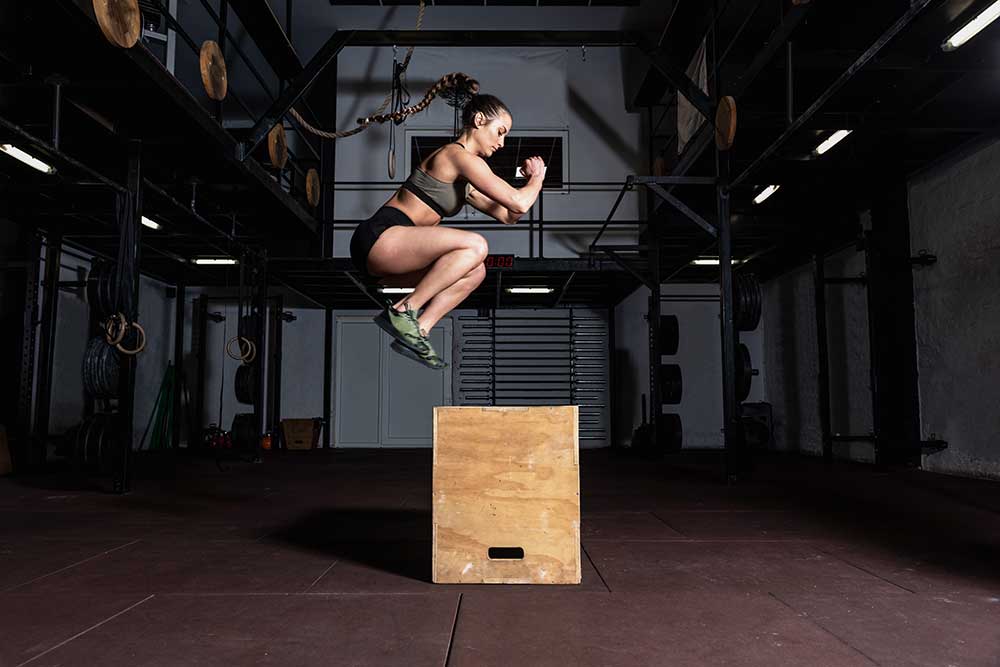
Dr. Richard Cunningham of Vail-Summit Orthopaedics & Neurosurgery (VSON) is a leader in ACL reconstruction and athlete recovery. One of the more difficult skills to regain after surgery isn’t just walking or running—it’s jumping. Whether you’re a skier, a soccer player, or a weekend warrior, regaining the ability to jump safely with sound biomechanics after ACL surgery relies on building leg and core strength.
“Jumping is a complex motion that requires coordinated neuromuscular control and strength from multiple muscle groups including your quadriceps, hamstrings, and glutes” says Dr. Cunningham.
Understanding the Role of the Quads and Hamstrings
After ACL reconstruction surgery, the quadriceps (front of the thigh) and hamstrings (back of the thigh) often become weakened due to graft harvest and the pain and swelling caused by surgery. These two major muscle groups are essential for stabilizing the knee and generating the explosive power required for jumping.
“We initially focus on restoring a normal walking gait in patients, but later in recovery we work on true return-to-sport readiness such as being able to jump, land, and pivot without hesitation or instability,” Dr. Cunningham explains. “That’s why strengthening the quads, glutes, and hamstrings are a non-negotiable part of recovery.”
Strengthening these muscle groups is central to:
- Protecting the ACL graft
- Preventing reinjury
- Restoring symmetry between legs
- Preparing for return to play ACL testing
Why Jumping Takes Time
Jumping after ACL reconstruction should never be rushed. It’s one of the last skills to be reintroduced in a structured rehab program because of the high demands it places on the knee. Dr. Cunningham says. “Jumping without adequate strength can lead to compensations, increased injury risk, and setbacks in recovery.”
Before progressing to plyometric exercises, patients must meet key strength milestones, including:
- At least 80% quadriceps and hamstring strength compared to the uninjured leg
- No increased swelling or joint pain after lower-impact activities
- Demonstrated control during single-leg squats, hops, and landing drills
Return to Play: Trust the Testing
In conjunction wtih physical therapy, Dr. Cunningham uses objective return to play ACL testing to assess readiness for jumping and sport-specific movement. These tests evaluate strength, balance, and dynamic movement under pressure.
“We rely on validated tools to make sure our patients are truly ready,” says Dr. Cunningham. “There is no one-size-fits-all timeline. If you’re building leg strength after ACL surgery and progressing well, your test results will reflect that.”
Return to play ACL testing ensures that athletes don’t just feel ready—they are ready. This is especially important when it comes to jumping after ACL reconstruction, which involves high forces and rapid deceleration.
Final Thoughts: Building Strength, Building Confidence
Dr. Cunningham and his team at VSON are committed to helping athletes return to sport safely and confidently. That starts with a focus on building leg strength after ACL surgery and ends with successfully returning to your sports after passing a rigorous strength test.
“Our goal isn’t just reconstructing the ligament,” Dr. Cunningham emphasizes. “It’s helping patients confidently return to jumping, running, pivoting, and competing at a high level again—without fear.”
If you’re wondering about jumping after ACL reconstruction or want to learn more about the process of building leg strength after ACL surgery, reach out to Dr. Cunningham and his team. They’ll help guide you every step of the way—from rehab to return to play.
